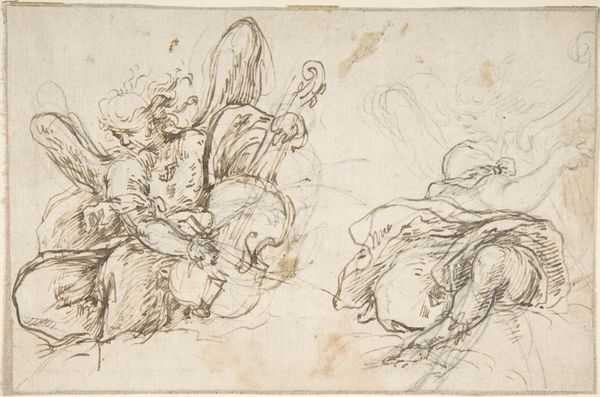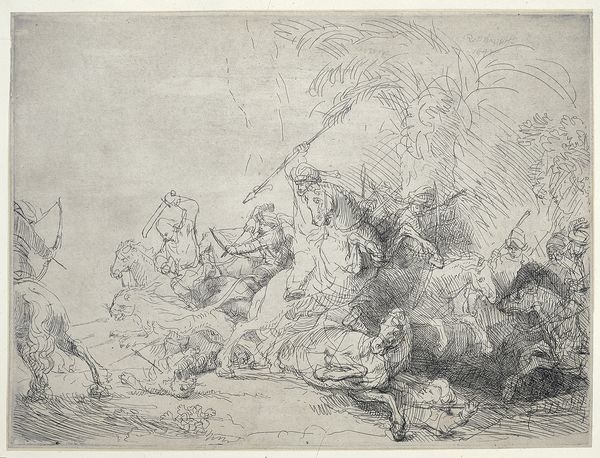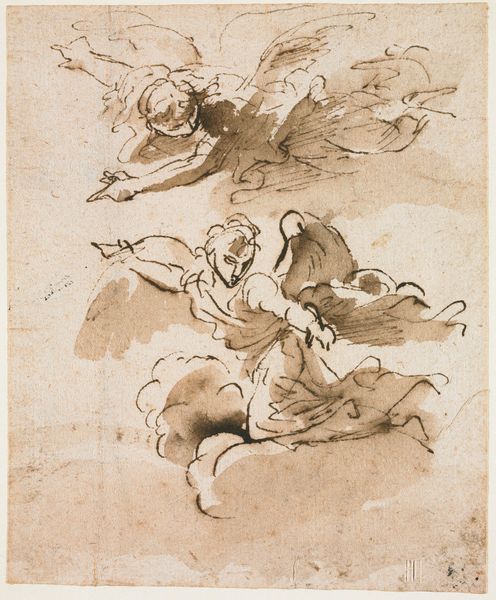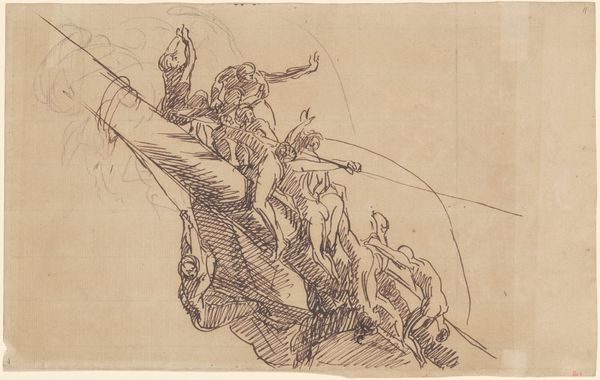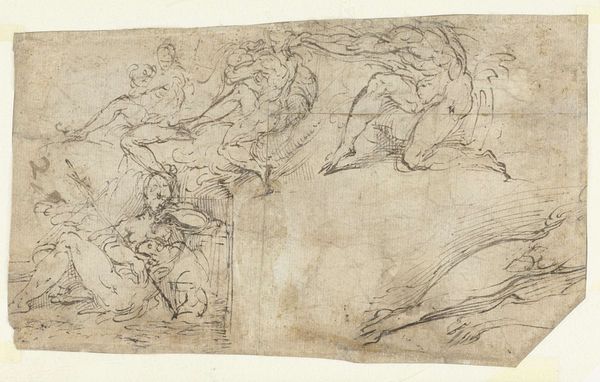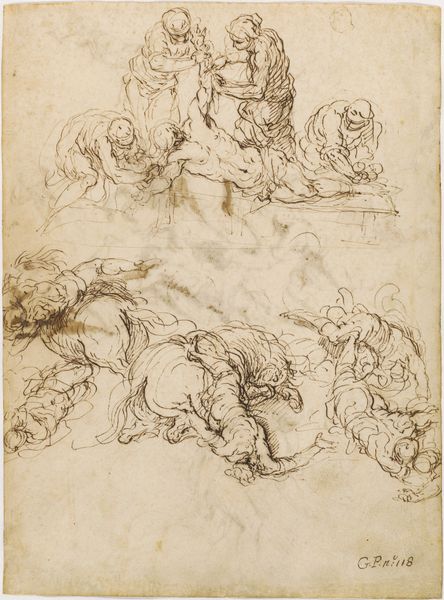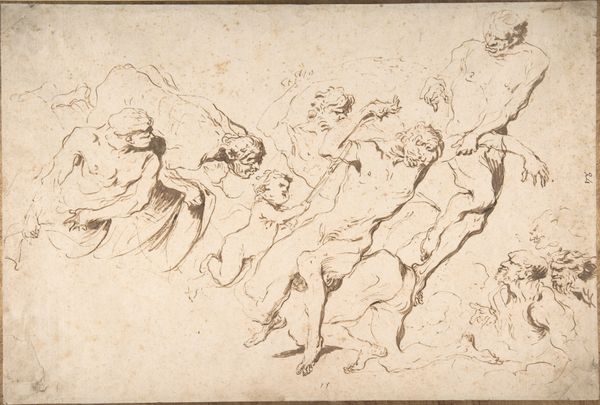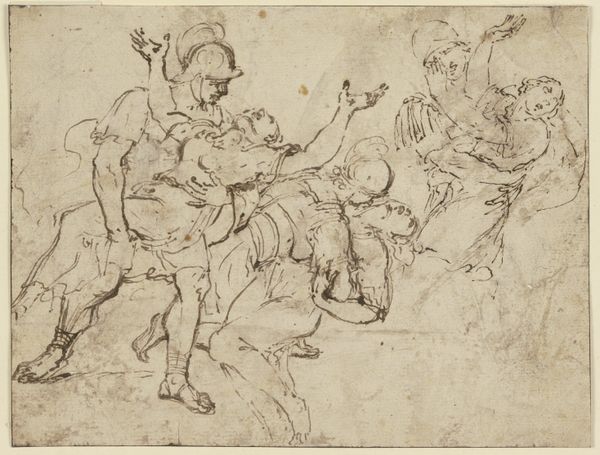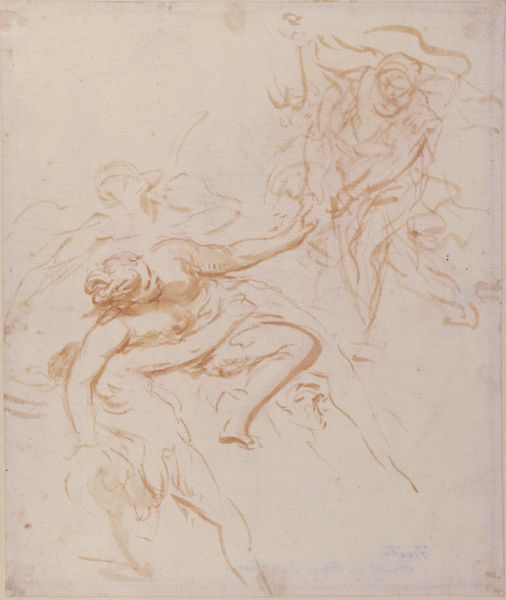
Studies for the Death of Empedokles 1666
0:00
0:00
salvatorrosa
National Gallery of Denmark (Statens Museum for Kunst), Copenhagen, Denmark
drawing, ink
#
drawing
#
baroque
#
pen sketch
#
pencil sketch
#
etching
#
figuration
#
ink
#
ink drawing experimentation
#
pen-ink sketch
#
line
#
history-painting
Copyright: Public domain
Editor: So, this is Salvator Rosa's "Studies for the Death of Empedokles," created in 1666, a pen and ink drawing. There’s a raw, almost frantic energy to the lines, a sense of figures caught in mid-air, or maybe a fall? What do you see in this piece beyond the immediate drama? Curator: The frantic energy you’re picking up on is key. Rosa wasn't just depicting a historical event; he was tapping into the broader anxieties of his time, particularly regarding philosophical authority and societal upheaval. Empedokles, a pre-Socratic philosopher, supposedly died by jumping into Mount Etna to prove his divinity. Does Rosa’s depiction of the event celebrate or critique that kind of ambition? Editor: I hadn't thought about a critique. The gestures seem theatrical, but are you suggesting Rosa is questioning the philosopher's motives rather than glorifying them? Curator: Precisely! Consider the socio-political climate of 17th-century Europe. The rise of scientific reasoning was challenging traditional authority. By depicting Empedokles’s dramatic, some might say arrogant, demise, Rosa could be interpreted as commenting on the dangers of unchecked hubris, the fragility of philosophical systems when confronted with material reality. It’s not just about death; it’s about the death of an old order. How does Rosa visually convey that anxiety, that transition? Editor: It’s in the chaos of the composition, maybe? Nothing feels stable. The sketchy lines, the figures suspended… it reflects a world being turned upside down. I was so focused on the immediate action, I missed the larger commentary. Curator: Exactly. It’s about understanding how artistic choices—line, composition, subject matter—reflect and respond to broader social and intellectual currents. Editor: Thanks for this fresh view! Now I see Rosa’s work not just as a historical scene, but as a potent commentary on its era’s anxieties about authority and change. Curator: Indeed, and by situating the work within its historical context, we can unlock its deeper meanings and see it as part of a continuous dialogue about power, knowledge, and the human condition.
Comments
No comments
Be the first to comment and join the conversation on the ultimate creative platform.

